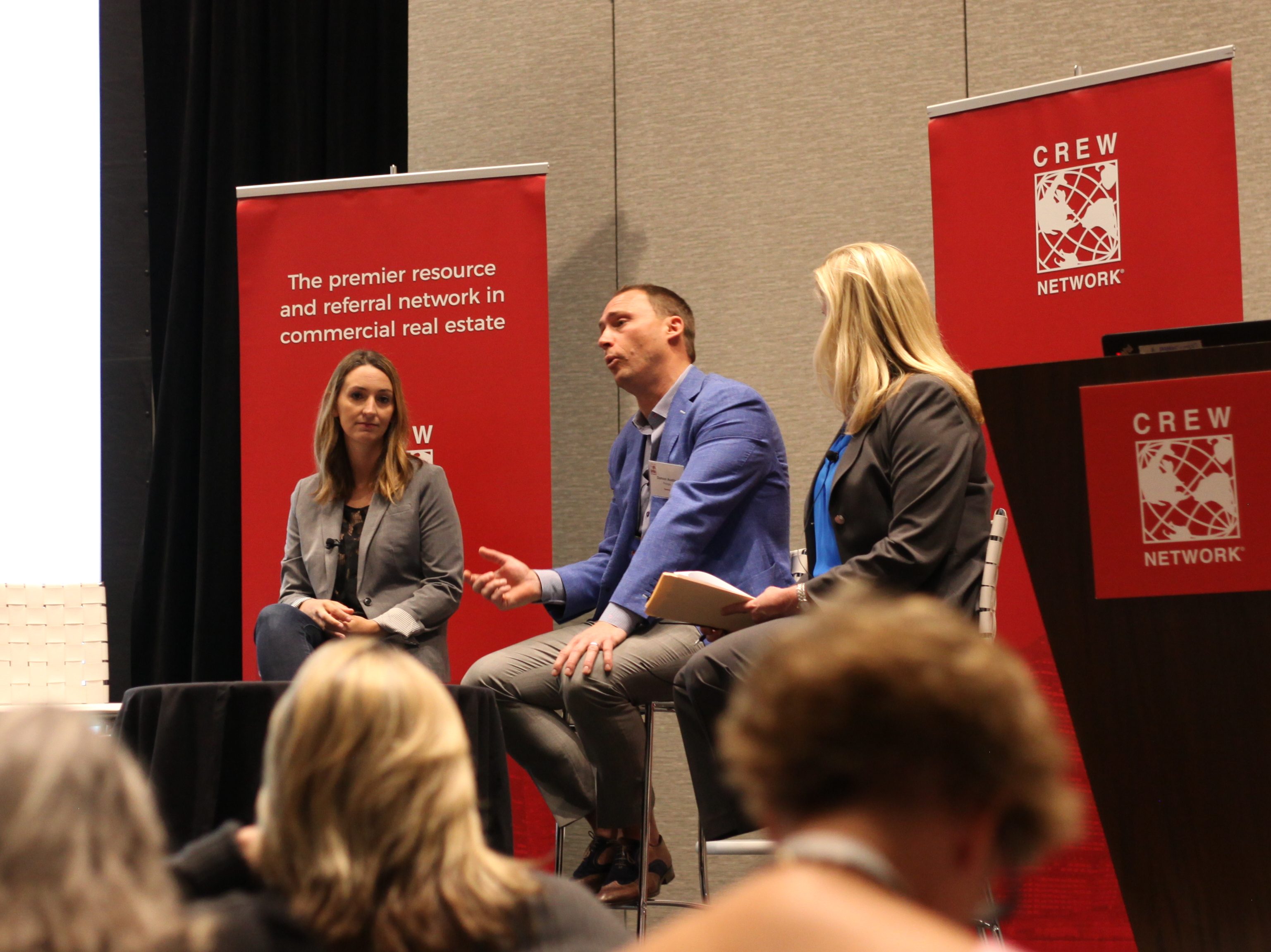Industrial Sector on Fire as Experts Brace for Change
Robotics, automation and more creative approaches to logistics centers are part of the new era in the country's booming market.
By Holly Dutton

Kristina Madayag, Damon Austin and Barbara Emmons Perrier discuss the industrial market at the 2018 CREW Convention in San Diego.
The industrial real estate sector in the U.S. is firing on all cylinders, as e-commerce continues to grow at a rapid clip. And experts in the field say this is just the beginning. Even the name—industrial—is changing, with companies now preferring “logistics” (as is common in the rest of the world) instead.
A recent report from CBRE found that online retail is behind many of 2018’s largest distribution deals. Southern California’s Inland Empire topped the list with 14 transactions totaling 11.6 million square feet.
Damon Austin of Prologis said his company is focusing on infill and securing properties near dense urban centers.
“We would still be in a good place now without e-commerce but that’s what’s taken our market from good to great,” said Austin at a panel on the industrial and logistics sector at the 2018 CREW Convention and Marketplace in San Diego on Oct. 18. “The closer we can get to consumers, that’s the best real estate. It’s also the scarcest real estate.”
Changing landscape
As the demand for industrial space has grown, companies like ProLogis and KBC Advisors have added more data scientists to their ranks. Entire new teams have been created purely to look at analytics, in order to help meet customer demand.
While the new data teams focus on where to put new logistics centers, some owners are looking to change it up after decades of staying the same. Over the last 50 years, there has been very little change to industrial facilities, said Austin. Not until Amazon’s e-commerce rise did industrial owners start to think about their properties differently. Now the focus is on using the space as efficiently as possible, and for some that means robotics and automation.
“For a long time we thought robotics would reduce employee count,” said Kristina Madayag of KBC Advisors. “We’ve seen we need the same if not more people to operate robotics. I think in the short term robotics won’t be taking labor jobs.”
Additionally, as customer demand to have products as soon as possible grows, companies will look to add more last-mile centers and spread them out around the city like USPS locations, said Madayag.







You must be logged in to post a comment.